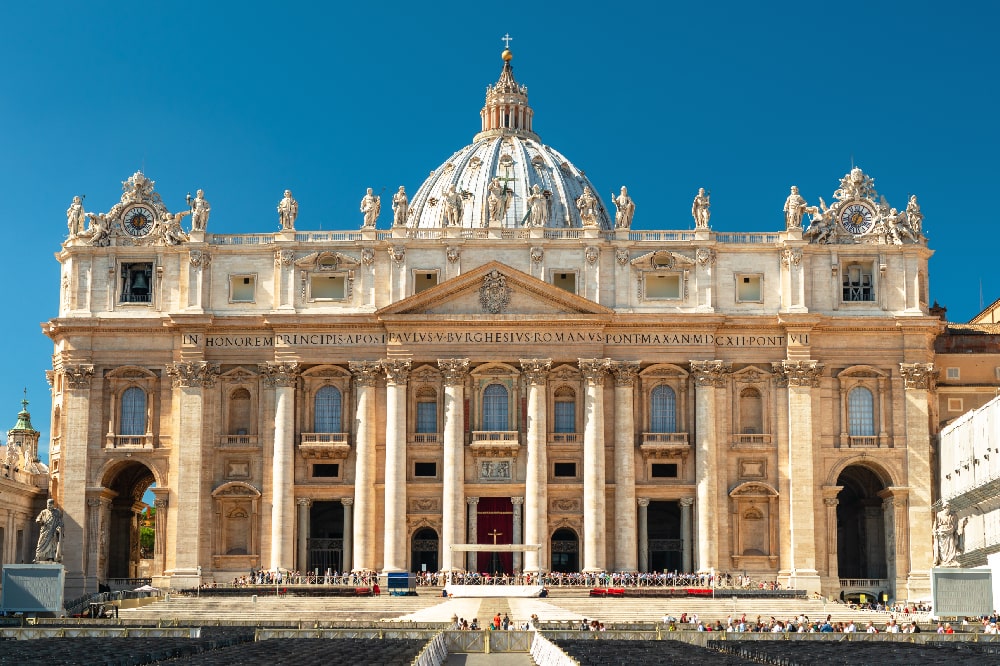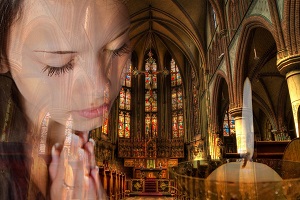The Black Madonna of the Sanctuary on the Guardia hill in Bologna is one of the sacred images attributed to Saint Luke. Here is its history.
There are many depictions of the Madonna directly attributed to Saint Luke. Think of the Black Virgin of Czestochowa, the Madonna d’Aracoeli, the Black Madonna in the Chapel of Saint Mark in Jerusalem, and many other images of Byzantine art. The Black Madonna in the Sanctuary dedicated to Saint Luke in Bologna, which from the Guardia hill seems to watch over the entire city, is also attributed to the Evangelist. Indeed, it is precisely the icon depicting the Virgin holding the blessing Baby Jesus, which has been kept in this place for centuries, that would have decreed the construction and dedication to this particular Saint.

The Black Virgin of Czestochowa painted by St. Luke
Among sacred icons, that of the Black Virgin of Czestochowa is one of the most emblematic and fascinating…
According to legend, a Greek hermit travelling to Constantinople received this precious icon of the Black Madonna, a work by the Evangelist Luke, from the priests of the Basilica of Santa Sofia. Since an inscription on the painting ordered that it be taken to the Guardia Mount, the hermit set off to find a place bearing that name. In Rome, he learned that near Bologna there was a hill called by that name, and so he continued his journey. In Bologna, the Black Madonna was welcomed with great celebration and carried in procession to the hill by the people and authorities.
The Sanctuary of the Madonna of San Luca
Subsequently, in the Medieval era, an oratory and a church were erected on the hill by the will of Angelica Bonfantini, a noblewoman who chose to take vows and donated her lands on the Guardia hill to the canons of Santa Maria in Reno, her order of affiliation. In return, she asked for help in building a church and maintaining it, including the usufruct and income of the goods donated by the faithful over time. Thus, in May 1194, the first stone of the new church on the Guardia hill, where the icon of the Virgin with Child would be placed, was laid.
Thanks to the Pope’s intercession and despite years of disputes with the Reno order, Angelica managed to retain the privileges and rights over the church and the Canonica. Upon her death, it was entrusted to a group of Augustinian nuns from the Ronzano hermitage, later affiliated with the Dominican order. The nuns erected a monastery dedicated to Saint Matthew nearby, where the Mother Superior resided, while the church on Guardia hill was guarded by a Vicar and nine nuns.

Saint Matthew: the apostle who took the place of Judas Iscariot
Saint Matthew the Apostle, the protector of engineers and butchers, was the only apostle not chosen by Jesus…
Over time, the sanctuary experienced periods of varying prosperity thanks to donations from the faithful, and between the 1400s and 1700s, it underwent many renovations and expansions.
The current building dates back to the 18th century and is predominantly Baroque. The Napoleonic invasion forced the nuns to leave the monastery and the church, which later came under the control of the Dominicans and finally the diocesan priests. Since 1874, the San Luca sanctuary has been considered a national monument. It also housed a female orphanage for many years and was accessible by a now-defunct cable car. The long portico built to allow pilgrims to reach the Sanctuary without getting wet in case of rain is characteristic: composed of 666 arches, it evokes the number of the Beast to remind how the Madonna was able to crush the Devil under her heel and defeat him.
The Icon of the Madonna of San Luca
In July 1433, the miracle of the rain took place: a procession from the hill brought the icon of the Madonna with Child to the city, ending the terrible rains that were destroying the crops. Since then, there have been many processions and celebrations that periodically brought the Black Madonna of San Luca from the Sanctuary to the city. When in Bologna, the precious icon was entrusted to the Confraternity of Santa Maria della Morte, guardians of the homonymous church, who welcomed it after the nuns of San Mattia adorned it with flowers and jewels. From there, the procession started for all the other churches.
The icon measures 65 x 57 cm and consists of a central poplar panel, two end panels of elm and chestnut, and a linen canvas on which tempera and silver leaf have been applied. It has been confirmed that a Byzantine painting lies underneath. Like other Black Madonnas, that of San Luca reflects the style of Eastern sacred art and, like the Black Virgin of Czestochowa, is an “Odigítria,” a Madonna of travellers, She who points and guides along the way. The half-length Virgin has the grave expression of the sorrowful Madonnas. Her face is long, and the fingers of the hand pointing to the Child are slender. Jesus has a blessing attitude. Usually, the painting is protected by a silver plate placed in the 1600s, which leaves only the faces of the Virgin and Child uncovered.


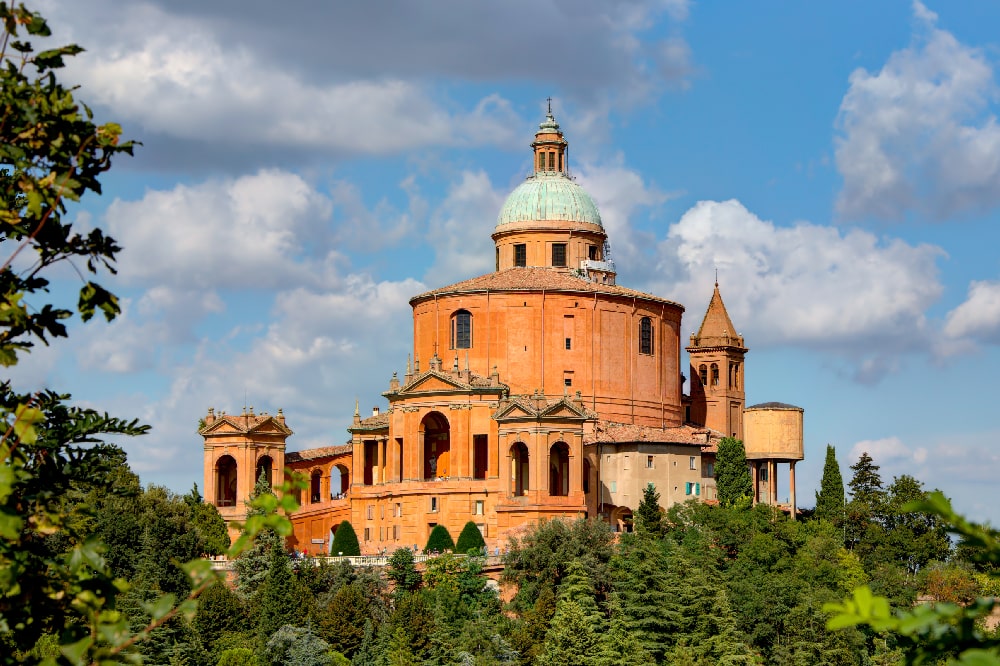
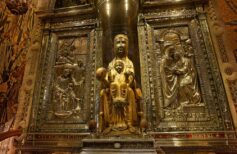
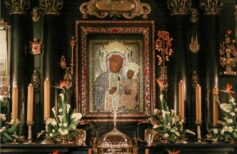
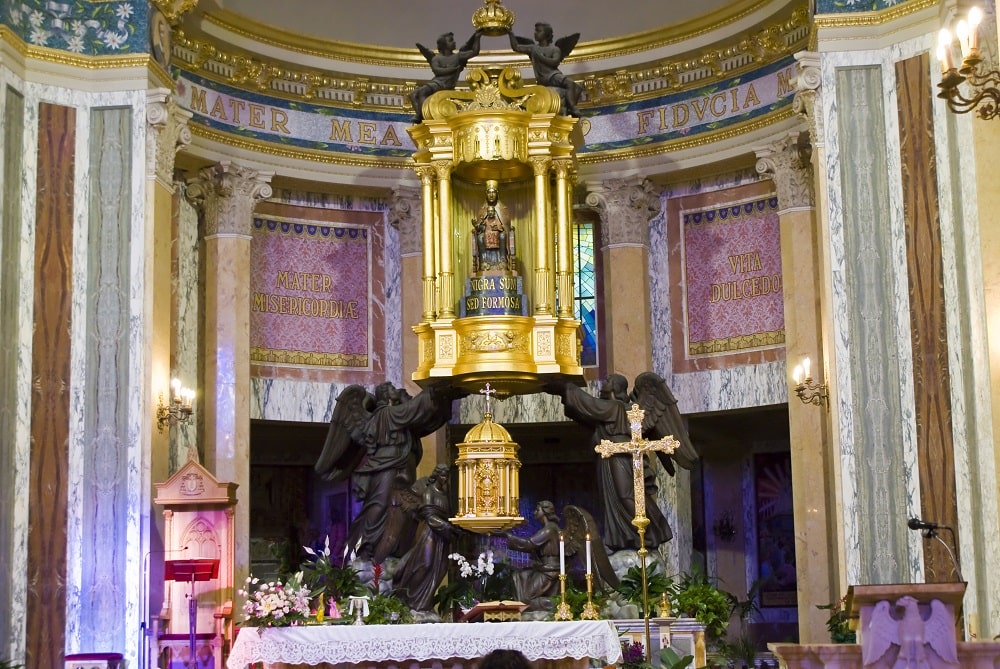

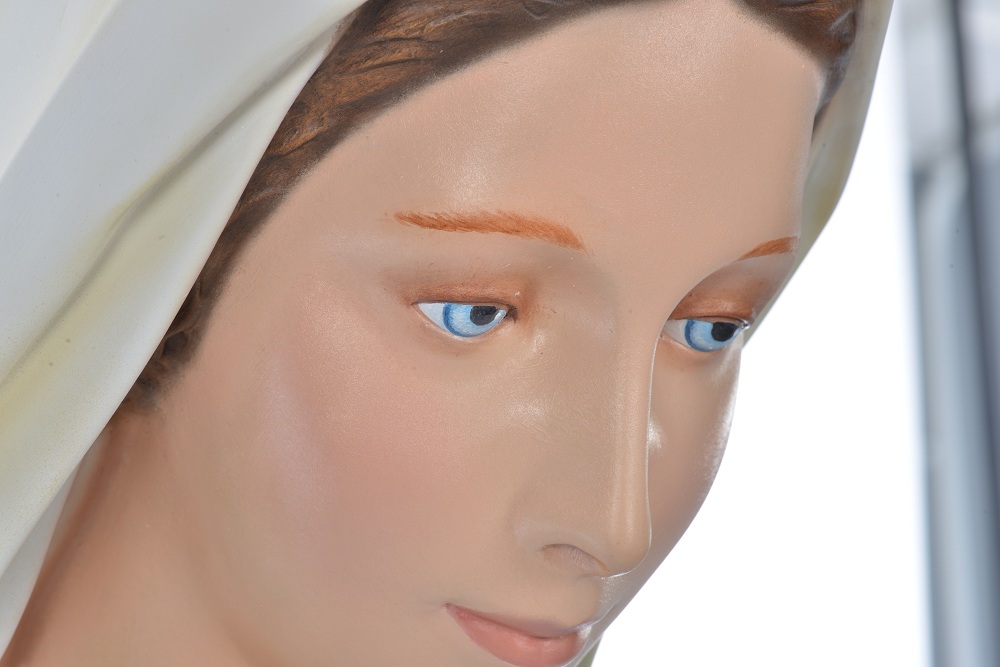
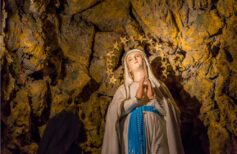

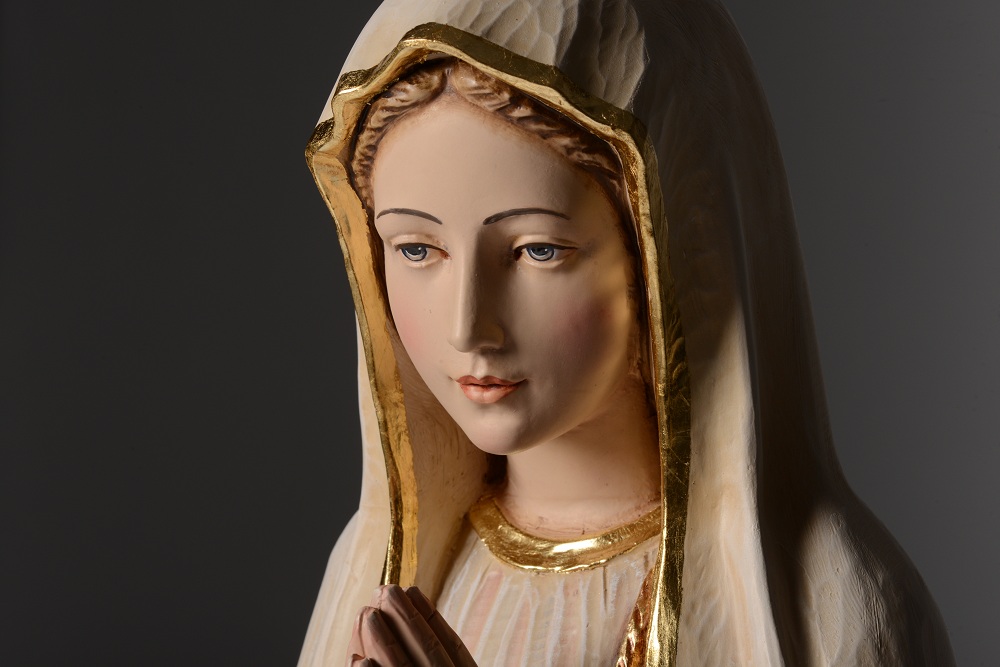
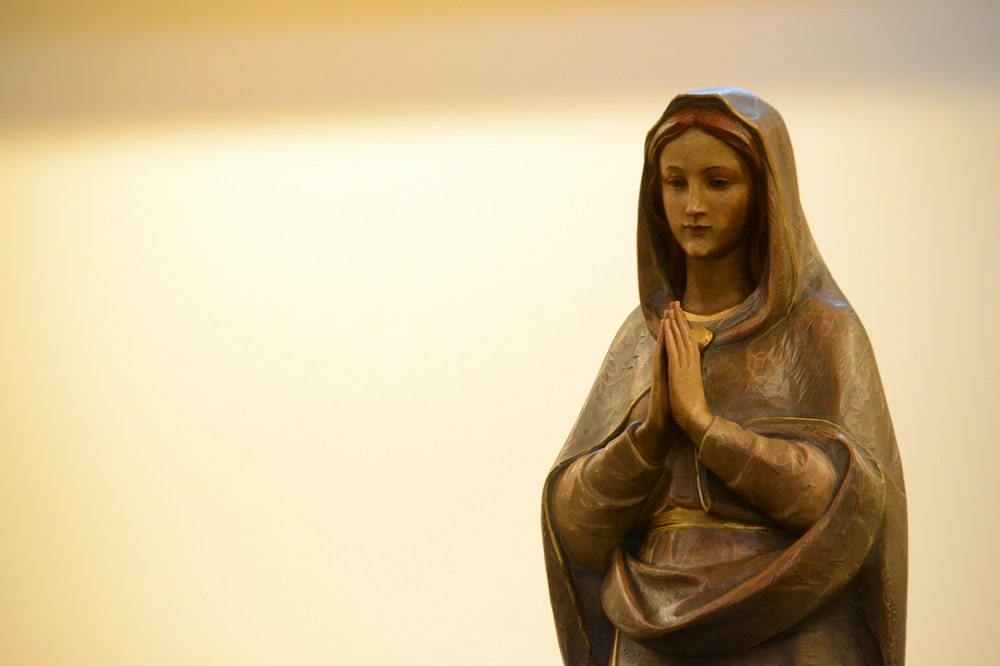








 25 August 2025
25 August 2025

